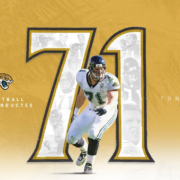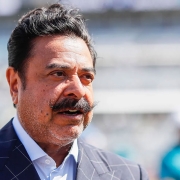Pro Football Hall of Fame Boselli Yearbook 2022
It didn’t take long for Tony Boselli to fall in love with football.
As a quarterback.
“Oh, I thought I was a quarterback,” he recalled of his ninth-grade year in football at Fairview High School in Boulder, Colorado. “I played quarterback that year and the first day of training camp the varsity Head Coach, Sam Pagano, moved me to tight end. The next year he moved me to O-Line. He told me later that the only reason he didn’t move me right to O-Line was because he thought I might quit.”
There was no chance of that.
“I did want to be the quarterback,” Boselli added. “But I really didn’t care when they moved me. I just wanted to play football.”
From those decisions by his high school coach and his fourteen-year-old self, a career as one of the best offensive linemen in the history of football was born.
A high school All-American as a senior, Tony chose the University of Southern California over his home state Colorado Buffaloes to study and continue his football career.
For Boselli’s final two years at USC, John Robinson returned for his second stint as the Trojans’ Head Coach. Tony had established himself as a starter and as a dominant player, but Robinson thought he could be better.
“I was hard on Tony,” Robinson admitted, adding he told USC’s offensive line coach Mike Barry to be hard on him as well.
Boselli says that made him a better player and was named the top offensive lineman in the Pac-10 in 1994.
Saying Boselli was “the best college offensive lineman I ever had,” Robinson saw a great professional future for Tony in the NFL.
“I grew up with John Madden,” Robinson said the night Boselli was named as part of the Pro Football Hall of Fame’s class of 2022. “So, I called him one day after Tony was drafted and said, ‘John, watch for this Boselli kid. He’s the best tackle I’ve ever seen!” ‘You’re crazy,’ John said to me and hung up. About a week later, he called me back and said, ‘About this Boselli guy, you might be right’!”
At Southern Cal, Boselli was an All-American on the football field and a three-time selection to the Pac-10’s All-Academic team.
He earned a degree in finance at USC and was awarded a postgraduate scholarship from the National Football Foundation.
But the NFL was calling.
As an expansion franchise, the Jacksonville Jaguars made Boselli the first pick in the franchise’s history, second overall in the 1995 NFL Draft.
“The cornerstone of the franchise,” is what Jaguars Head Coach and General Manager Tom Coughlin called him at the time.
And he was that.
With Boselli in the lineup, the Jaguars won sixty percent of their games and were a perennial contender, making the AFC Championship game in 1996 and 1999.
Named to the All-Rookie team in 1995 and the All-Decade team of the 1990’s despite playing only half the decade, Boselli was elected to five Pro Bowls and was All-Pro three times.
No easy feat playing in the “Golden Age of Tackles” with fellow Hall of Fame tackles Willie Roaf, Walter Jones, Jonathan Ogden, Orlando Pace and Gary Zimmerman.
“I wore 71 because that’s what Tony wore,” Jones said.
“I’d check my game against Tony’s every week. Even though we weren’t even in the same conference,” Roaf admitted.
From his position at left tackle, Boselli handled fellow Hall of Famers Bruce Smith, Derek Thomas, John Randle, Jason Taylor, and others.
Smith was the league’s Defensive Player of the Year when Boselli neutralized him in the AFC Championship game in Buffalo. Thomas was coming off a six-sack performance the week before against the Raiders when Tony took him on the following Sunday.
“We’re putting Boselli on him and not going to worry about it,” Coughlin said the week leading up to the game.
While it was considered a marquee matchup, Boselli rendered Thomas ineffective for four quarters.
“Boselli beat me down on a Monday night,” Taylor said, recalling Tony waving him to the other end of the field. “An epic beatdown. Surprised it didn’t knock me into retirement.”
Former Seattle and Steelers Offensive Line Coach Kent Stephenson probably watched more “Boselli tape” than anybody in football.
“Since we were in the same conference and the same division, we played similar opponents. I watched him every week. You couldn’t help but watch him perform. He jumped off the film. He could do it all. He was a great, great player.”
“There are certain guys that when the lights go on and when the game is on the line, they have something extra,” he added. “Boselli had that.”
Choosing Mark Brunell, his former quarterback and best friend as his presenter for the Hall of Fame seemed like a natural selection, but Brunell remembers it wasn’t always that smooth.
“We didn’t get along when we first met,” Brunell recalled with a laugh. “I didn’t like him actually.”
“He thought he was the best offensive lineman in training camp as a rookie.”
“Which he was. “
“He thought he was the best player on the team.”
“Which he was.”
“And he thought he was the toughest guy on the team,” Brunell continued through the laughter.
“Which he was.”
Mark and Tony found some common ground through their faith and their families, and their friendship grew and blossomed into what it is today.
A 19-year NFL career with five teams gives Brunell some perspective on talent in the league and he puts Boselli in some rarefied air.
“I wouldn’t say Tony was better than Brett Favre or Reggie White, but those are the guys he’s in the conversation with.”
Boselli dipped his toe into the political arena when his NFL career ended. After years of outstanding philanthropy work in North Florida, he gained a real sense of what children and families in need were looking for. He was encouraged to run for Mayor and gave it serious consideration but decided his best work could be accomplished through his foundation and outside of politics.
A bout with Covid three years ago gave Boselli some new perspective. During his hospital stay, Boselli was quarantined, only staying in contact with his family via text when he had enough energy to grab his phone. He credits the health care workers with his recovery. They were the only people allowed near him, wearing full protective gear.
“They were great,” Tony said with a strong sense of gratitude. “Those doctors and PAs and nurses and techs, everyone, they’re amazing. These people were absolutely amazing. Superstars.”
Boselli and his wife Angi have two sons and three daughters and live in Ponte Vedra Beach, Florida. Tony is in the health care business but stays close to football with a national broadcasting career on Westwood One and locally on the Jaguars radio broadcasts.
Now the “cornerstone”’ of Jaguars history, Boselli says he’s with the Jaguars to stay.
“As long as there is a Jaguars team, I’ll be a part of it.”

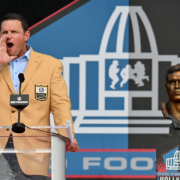
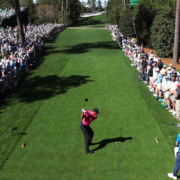
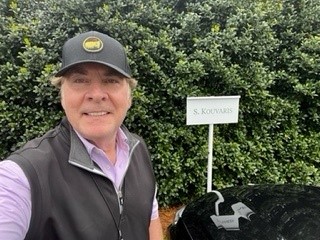 “You’ve had a big week,” my long-time friend “The Ghost” texted me on Sunday of this year’s Masters Tournament.
“You’ve had a big week,” my long-time friend “The Ghost” texted me on Sunday of this year’s Masters Tournament.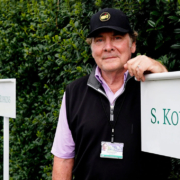
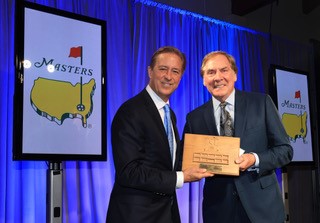 In early 2020, Kouvaris received a letter in the mail from Augusta National Golf Club Chairman Fred Ridley congratulating him on his upcoming coverage of his 40th Masters and notifying him that he would be honored with the Masters Major Achievement Award in April. But then the global pandemic postponed the Masters until November and canceled the Golf Writers Association of America Annual Awards Dinner, where the award is traditionally presented, for not one but two years.
In early 2020, Kouvaris received a letter in the mail from Augusta National Golf Club Chairman Fred Ridley congratulating him on his upcoming coverage of his 40th Masters and notifying him that he would be honored with the Masters Major Achievement Award in April. But then the global pandemic postponed the Masters until November and canceled the Golf Writers Association of America Annual Awards Dinner, where the award is traditionally presented, for not one but two years.